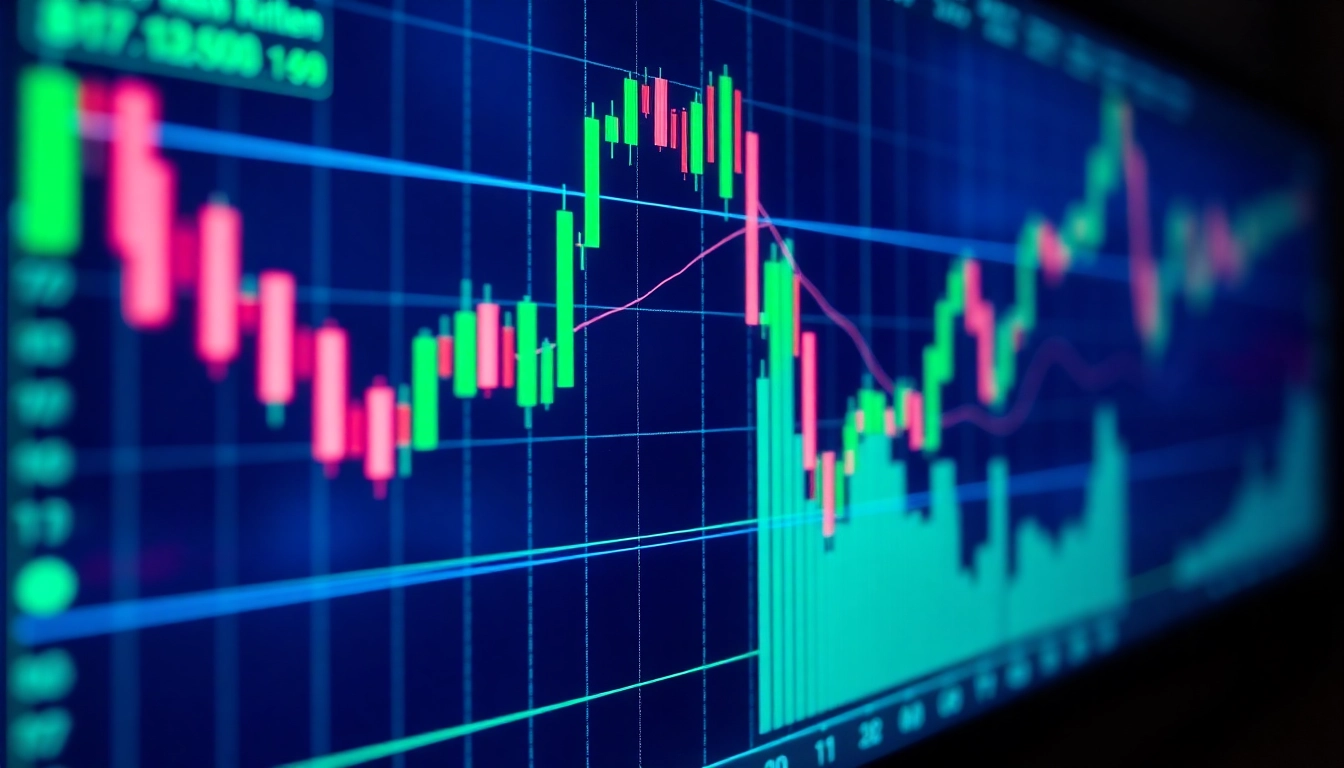Understanding Trading View: Features and Benefits for Traders
In the fast-paced world of trading and investment, having access to powerful analytical tools is essential for making informed decisions. One platform that has gained immense popularity among traders and investors worldwide is trading view. Known for its comprehensive charting capabilities, social trading features, and real-time market data, TradingView has revolutionized how market participants analyze and interact with financial markets. This article explores the core tools and functionalities of TradingView, highlighting how it enhances market analysis and supports community engagement for traders of all levels.
Overview of Core Tools and Functionalities
TradingView offers a robust suite of tools designed for both technical analysis and market research. Its core functionalities include advanced charting, a broad library of technical indicators, customizable templates, and real-time data feeds across multiple asset classes—from stocks and cryptocurrencies to forex and commodities.
At the heart of TradingView is its user-friendly charting interface, which supports multiple chart types such as candlestick, bar, line, and Heikin-Ashi charts. Users can overlay numerous technical indicators, including Moving Averages, RSI, MACD, Bollinger Bands, and Fibonacci retracements, enabling a multi-dimensional view of market dynamics.
Furthermore, TradingView’s charting platform is highly customizable. Traders can create personalized layouts, save their preferred indicator settings, and even develop their own indicators using Pine Script, a powerful scripting language integrated into the platform. This flexibility allows for tailored analysis approaches aligned with individual trading strategies.
Complementing these analytical tools are features like economic calendars, news feeds, and market screener tools, which help traders stay abreast of market-moving events and identify potential trade setups efficiently.
How Trading View Enhances Market Analysis
One of TradingView’s significant strengths lies in its ability to elevate market analysis through innovative features. Its real-time data integration ensures traders have the latest information at their fingertips, essential for high-frequency and day trading.
Multi-timeframe analysis allows traders to view the same asset across different time horizons, facilitating better trend recognition and timing decisions. For instance, a trader might analyze a daily chart for trend direction and a 15-minute chart for precise entry points.
Moreover, TradingView’s social features—such as sharing charts, ideas, and strategies—stimulate collective intelligence. Traders can publish their analyses, receive feedback, and learn from a global community. This collaborative environment fosters diverse perspectives, helping traders refine their hypotheses and avoid cognitive biases.
Advanced charting tools like drawing tools, pattern recognition, and volume analysis further deepen insights into market behavior. For example, pattern formations like head and shoulders or double bottoms can be easily identified using TradingView’s graphical tools, facilitating pattern-based trading strategies.
Community and Social Trading Features
Beyond individual analysis, TradingView’s social trading ecosystem is integral to its appeal. Users can explore ideas shared by millions of traders worldwide, comment, and discuss market opportunities. The platform acts as a social network for traders, blending analysis with community engagement.
Community ideas often include trade forecasts, technical setups, and market commentary, providing actionable insights and educational content. New traders can benefit from observing these shared strategies, gaining practical knowledge and confidence.
Additionally, TradingView supports integrated chat and messaging features, allowing direct communication between traders, fostering mentorship, and cooperation. The platform’s leaderboard systems rank top performers, motivating higher engagement and peer recognition.
Such social features not only democratize access to trading insights but also create a dynamic environment for continuous learning and strategy refinement.
Setting Up Your Trading View Account for Success
Creating a Personalized Watchlist and Layouts
Starting with TradingView involves customizing your workspace to match your trading style. Building a watchlist of preferred assets allows quick access to market data. Traders can add stocks, forex pairs, cryptocurrencies, or indices and monitor their price movements in real time.
Personalized layouts—consisting of multiple charts, indicators, and news panels—are vital for efficient analysis. Saving different layouts for different trading scenarios (e.g., day trading vs. swing trading) enhances workflow and decreases analysis time.
Utilizing Alerts and Notifications Effectively
One of TradingView’s game-changing features is its alert system. Traders can set alerts based on price levels, indicator conditions, or drawing tools. These notifications are delivered via pop-ups, emails, or mobile notifications, ensuring traders never miss critical movements.
Effective use of alerts automates part of the trading process, freeing traders to focus on strategy while maintaining awareness of evolving market conditions.
Integrating Trading View with Brokerage Accounts
TradingView supports integration with numerous brokerage platforms, allowing traders to execute orders directly from the platform. This seamless connection streamlines the trading process, reducing latency and eliminating the need to switch between multiple applications.
Proper integration also enhances risk management, as traders can monitor and manage positions in real time, alter stop-loss or take-profit levels quickly, and analyze order execution quality.
Advanced Trading Strategies Using Trading View
Applying Technical Analysis Indicators
Technical analysis remains a core component of trading strategies on TradingView. Traders leverage a variety of indicators, combining them to confirm signals. For example, a trader might use Moving Average Crossovers in conjunction with RSI divergence to identify potential trend reversals.
Backtesting these strategies on historical data helps evaluate their robustness and refine parameters before live deployment.
Custom Scripting and Alert Automation
Pine Script, TradingView’s scripting language, empowers traders to develop custom indicators, alerts, and automated strategies. This flexibility enables the implementation of unique trading algorithms, tailored to specific asset behaviors or market conditions.
Automating alerts based on complex criteria reduces manual analysis workload and enhances reaction times, especially crucial in volatile markets.
Backtesting Strategies on Trading View Charts
Backtesting involves applying trading strategies to historical data to assess performance. TradingView’s built-in backtester provides detailed metrics like profit factor, drawdowns, and win/loss ratios, guiding traders towards strategies with statistical validity.
This iterative process of testing and optimizing helps traders improve their edge and adapt strategies to changing market environments.
Optimizing Performance and User Experience
Best Practices for Chart Customization
Personalized chart setups facilitate faster analysis and more accurate decision-making. Use clear color themes, logical indicator stacking, and label important levels to prevent clutter and improve readability.
Saving multiple templates allows rapid switching between trading modes, such as scalping or swing trading.
Managing Data Loads and Avoiding Lag
High-resolution charts with multiple indicators can strain system resources. To maintain smooth performance, optimize chart parameters—limit the number of visible indicators, reduce real-time data refresh rates, and close unused charts.
Employing the desktop application or mobile app with adequate hardware support can further enhance responsiveness.
Utilizing Mobile and Desktop Features for Consistent Trading
TradingView’s apps synchronize settings across devices, allowing traders to analyze markets and execute trades from desktops, tablets, or smartphones. Leveraging notifications and mobile alerts ensures real-time updates regardless of location, making trading seamless and flexible.
Future Trends and Cutting-Edge Tools on Trading View
The Role of AI and Machine Learning in Trading View
Artificial intelligence and machine learning are transforming market analysis, and TradingView is integrating these technologies to enhance prediction accuracy. AI-driven trading signals, sentiment analysis, and pattern recognition are areas where future updates promise to provide traders with deeper insights.
Upcoming Updates and New Features
TradingView continuously evolves with new features such as improved backtesting tools, enhanced social integration, and expanded asset coverage. Regular updates aim to provide traders with innovative ways to analyze and execute trades efficiently.
Integrating Third-Party Data Sources and APIs
Support for third-party APIs enables traders to incorporate alternative data streams, sentiment metrics, and custom indicators into their analysis environment. This openness promotes a more comprehensive and customized trading experience, bridging the gap between raw data and actionable insights.



